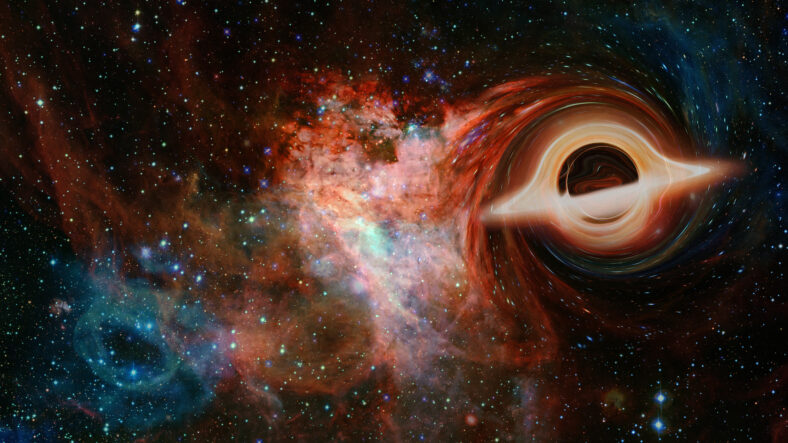
A large spiral galaxy nearly a billion light-years away harbors a supermassive black hole at its center, just like our Milky Way does.
However, it differs from our galaxy because it emits powerful radio jets, which are streams of fast-moving particles that release radio waves. They stretch for more than five million light-years long.
It is unclear what fuels the radio jets, but the discovery could hint at how giant spiral galaxies form in the first place.
The galaxy was nicknamed J2345-0449. These kinds of strong radio jets are incredibly rare for spiral galaxies. That means its black hole must be extremely massive and spinning to create the big jets.
Data from the Hubble Space Telescope, the Giant Metrewave Radio Telescope, and the Atacama Large Millimeter Array indicate that the radio jets are preventing stars from forming near the center of the galaxy.
The jets likely heat up nearby gases to such a high temperature that they cannot collapse into new stars, or the stars are pushed out of the galaxy entirely.
The Milky Way and J2345-0449 are both spiral galaxies, but it is unlikely that we will observe the jets in our own galaxy.
The supermassive black hole at the Milky Way’s center, Sagittarius A*, is too small to produce radio jets that are as powerful as the ones seen in J2345-0449.
If the Milky Way somehow does end up producing similar jet streams in the future, the cosmic rays, gamma rays, and X-rays from the streams would wreak havoc in our solar system due to the increased radiation.

Sign up for Chip Chick’s newsletter and get stories like this delivered to your inbox.
The jets could be triggered if a star, gas cloud, or dwarf galaxy is effectively eaten up by the Milky Way’s black hole.
A jet near Earth could degrade our ozone layer and lead to a mass extinction. Fortunately, such events have not been observed in the Milky Way.
Overall, studying the galaxies can help scientists learn more about the growth of supermassive black holes and their host galaxies.
It is possible that J2345-0449 and its host galaxy have grown together in isolated conditions and did not gain their mass from merging galaxies based on the shape of the group of the stars at the galaxy’s center.
Further research could also explain what fuels the powerful radio jets. The rarity of such galaxies indicates that the process of creating huge radio jets must be difficult to maintain in spiral galaxies.
“Understanding these rare galaxies could provide vital clues about the unseen forces governing the universe,” said Shankar Ray, a co-author of the study and an astrophysicist at Christ University, Bangalore.
“Ultimately, this study brings us one step closer to unraveling the mysteries of the cosmos, reminding us that the universe still holds surprises beyond our imagination.”
The details of the new study were published in the Monthly Notices of the Royal Astronomical Society.












